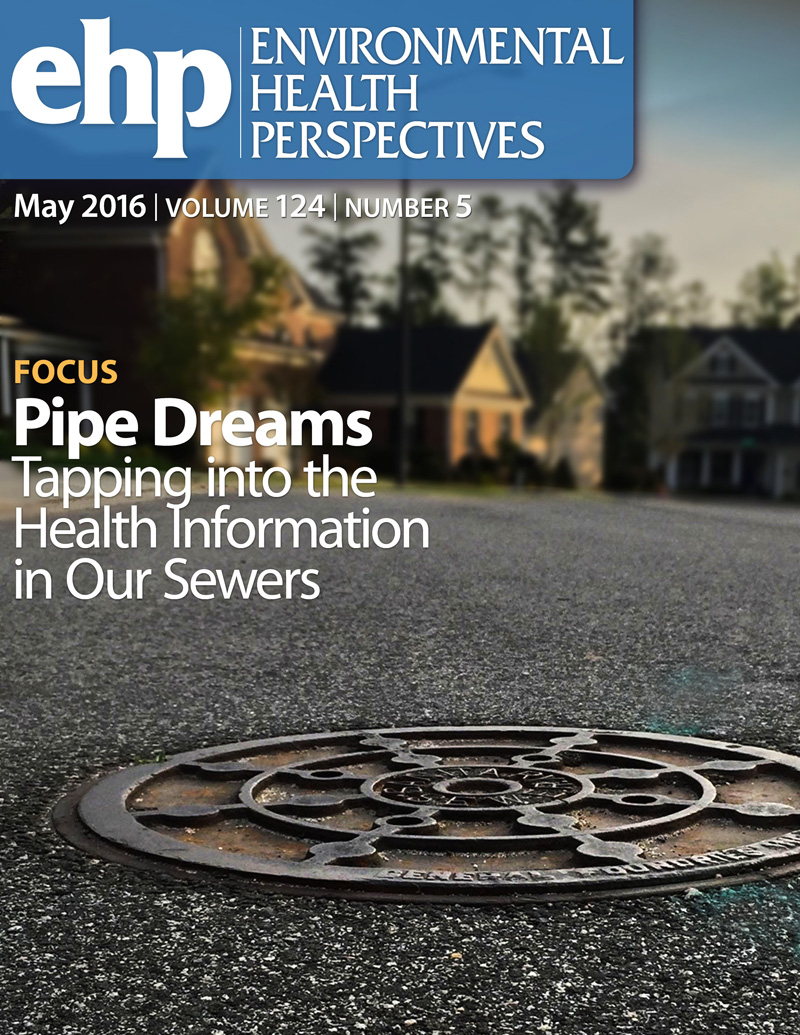澳大利亚气温升高对肝癌的长期影响:贝叶斯空间分析
IF 10.1
1区 环境科学与生态学
Q1 ENVIRONMENTAL SCIENCES
引用次数: 0
摘要
背景虽然有证据表明气候变化可能与致癌因素有关,但气候变化对肝癌风险的长期影响在很大程度上仍不明确。方法我们绘制了澳大利亚 2001 年至 2019 年肝癌发病率的空间分布图。在控制了慢性乙型肝炎流行率、慢性丙型肝炎流行率和相对社会经济劣势指数之后,我们使用贝叶斯空间条件自回归(CAR)模型来估计不同滞后期的气温上升与澳大利亚肝癌发病率之间的关系。研究结果表明,澳大利亚肝癌的分布具有空间聚集性,北领地和北昆士兰的大部分地区发病率和相对风险较高。研究发现,滞后 30 年的气温升高与澳大利亚肝癌发病率的升高相关,单变量模型的后验均值分别为 30.57 [95% 贝叶斯可信区间 (CrI):0.17, 58.88],控制混杂因素后的后验均值分别为 29.50 (95% CrI:1.27, 58.95)。我们的贝叶斯空间分析表明,气温升高与肝癌之间存在潜在关系。据我们所知,这项研究是首次尝试评估全球变暖对肝癌的长期影响。如果这种关系被其他研究证实,这些发现可能会为根据气候变化预测制定预防和缓解策略提供参考。https://doi.org/10.1289/EHP14574。本文章由计算机程序翻译,如有差异,请以英文原文为准。
Long-Term Effect of Temperature Increase on Liver Cancer in Australia: A Bayesian Spatial Analysis.
BACKGROUND
While some evidence has potentially linked climate change to carcinogenic factors, the long-term effect of climate change on liver cancer risk largely remains unclear.
OBJECTIVES
Our objective is to evaluate the long-term relationship between temperature increase and liver cancer incidence in Australia.
METHODS
We mapped the spatial distribution of liver cancer incidence from 2001 to 2019 in Australia. A Bayesian spatial conditional autoregressive (CAR) model was used to estimate the relationships between the increase in temperature at different lags and liver cancer incidence in Australia, after controlling for chronic hepatitis B prevalence, chronic hepatitis C prevalence, and the Index of Relative Socio-economic Disadvantage. Spatial random effects obtained from the Bayesian CAR model were also mapped.
RESULTS
The research showed that the distribution of liver cancer in Australia is spatially clustered, most areas in Northern Territory and Northern Queensland have higher incidence and relative risk. The increase in temperature at the lag of 30 years was found to correlate with the increase in liver cancer incidence in Australia, with a posterior mean of 30.57 [95% Bayesian credible interval (CrI): 0.17, 58.88] for the univariate model and 29.50 (95% CrI: 1.27, 58.95) after controlling for confounders, respectively. The results were not highly credible for other lags.
DISCUSSION
Our Bayesian spatial analysis suggested a potential relationship between temperature increase and liver cancer. To our knowledge, this research marks the first attempt to assess the long-term effect of global warming on liver cancer. If the relationship is confirmed by other studies, these findings may inform the development of prevention and mitigation strategies based on climate change projections. https://doi.org/10.1289/EHP14574.
求助全文
通过发布文献求助,成功后即可免费获取论文全文。
去求助
来源期刊

Environmental Health Perspectives
环境科学-公共卫生、环境卫生与职业卫生
CiteScore
14.40
自引率
2.90%
发文量
388
审稿时长
6 months
期刊介绍:
Environmental Health Perspectives (EHP) is a monthly peer-reviewed journal supported by the National Institute of Environmental Health Sciences, part of the National Institutes of Health under the U.S. Department of Health and Human Services. Its mission is to facilitate discussions on the connections between the environment and human health by publishing top-notch research and news. EHP ranks third in Public, Environmental, and Occupational Health, fourth in Toxicology, and fifth in Environmental Sciences.
 求助内容:
求助内容: 应助结果提醒方式:
应助结果提醒方式:


